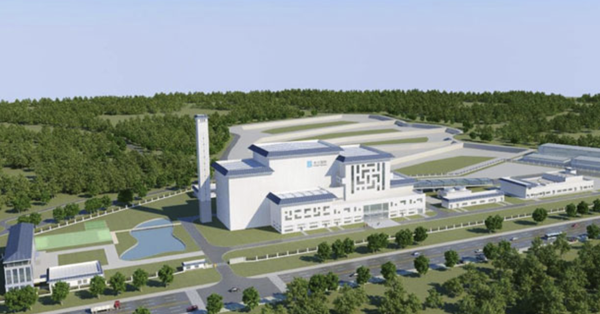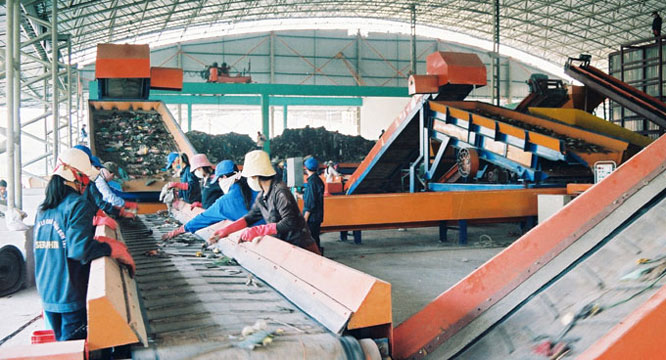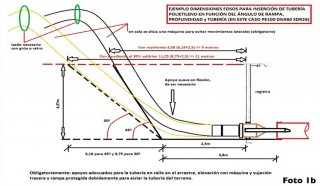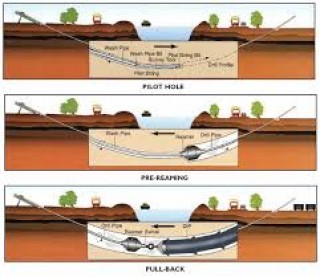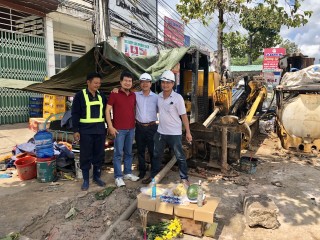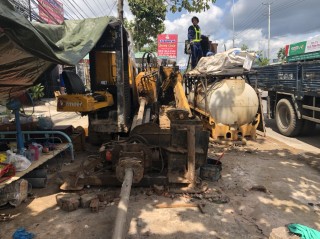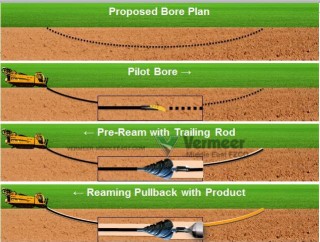Description of investment project investment project of waste treatment plant BP
The project "BP Waste Treatment Plant" was built in village 1, Suoi Kiet commune, Tanh Linh district, Binh Thuan province to achieve the following goals:
Ngày đăng: 23-11-2021
884 lượt xem
TABLE OF CONTENTS
CHAPTER I: INTRODUCTION OF INVESTORS AND PROJECTS...............................5
I.1. Investor introduction ...............................................................................5
I.2. Brief description of the project ...............................................................5
I.3. Legal grounds............................................................................................5
CHAPTER II: NECESSARY FOR INVESTMENT .................................7
II.1. Investment mission objectives ...........................................................7
II.2. Necessity of investment..........................................................................7
CHAPTER III: ANALYSIS OF THE INVESTMENT ENVIRONMENT ............9
III.1. Natural condition........................................................…………..........9
III.1.1. Geographical location....................................................................9
III.1.2. Topographic....................................................................................10
III.1.3. Climate.........................................................................................11
III.2. Social and economic conditions.........................................................11
III.2.1. Socio-economics of Suoi Kiet commune .......................................11
III.2.2. Traffic road.......................................................................................12
III.2.3. Surface drainage system ..............................................................12
III.2.4. Dirty water drainage system, environmental sanitation .....................12
III.2.5. Public lighting and power supply system ............................................12
III.3. General comments on the current status of the project's investment location ...12
CHAPTER IV: GENERAL PLANNING ............................................................13
IV.1. Planning – functional zoning ........................................................................13
IV.1.1. The master plan ground..............................................................................13
IV.1.2. Construction items................................................................................14
IV.1.3. Spatial layout of landscape architecture .................................................14
IV.2. Infrastructure planning ..................................................................................15
IV.2.1. Technical preparation of construction land ..............................................15
IV.2.2. Traffic planning........................................................................................15
IV.2.3. Electric supplying system.....................................................................15
IV.2.4. Water supply system.................................................................................16
IV.2.5. Stormwater..............................................................................................16
IV.2.6. Draining dirty water ...................................................................................16
IV.2.7. Communication planning ...........................................................................16
CHAPTER V: TECHNICAL TECHNOLOGY PLAN ..............................................17
V.1. Raw materials, fuel, products ..........................................................................17
V.1.1. Material...................................................................................................17
V.1.2. Fuel.............................................................................................................17
V.1.3. Product...........................................................................................................17
V.2. Waste treatment technology .................................................\....................17
V.2.1. Technology selection ...............................................................................17
V.2.2. Electrothermal technology ........................................................................18
V.2.3. Main specifications.........................................................................................20
V.3. Hazardous industrial waste treatment technology ............................................21
V.3.1. Selection of hazardous industrial waste treatment technology ......................22
V.3.2. FBE incinerator technology .............................................................................22
V.3.3. Main technical parameters of the hazardous industrial waste incinerator FBE.....28
V.3.4. Heat mode and temperature regime of FBE incinerator ..............................29
V.3.5. Model of the hazardous industrial waste incinerator FBE ..........................30
V.4. Medical waste treatment technology ................................................................ 31
V.4.1. LODY-50 medical waste incinerator technology .........................................31
V.4.2. Basic specifications of the medical waste incinerator LODY-50................35
CHAPTER VI: ENVIRONMENTAL IMPACT ASSESSMENT .....................36
VI.1. General introduction.....................................................................................36
VI.2. Potentially Pollution Sources and Indicated Contaminants.........................36
VI.2.1. Sources of air pollution .........................................................................36
VI.2.2. Noise source .....................................................................................36
VI.2.3. Sources of water pollution .......................................................................36
VI.2.4. Solid waste.............................................................................................37
VI.3. Assessment of the project's level of impact on the regional environment........38
VI.3.1. Impacts of the project on the air environment ............................................38
VI.3.2. Effects of air pollutants .............................................................................41
VI.3.3. Impacts of the project on the water environment ....................................42
VI.3.4. Impacts due to solid waste .......................................................................44
VI.3.5. Impacts on the tourist-cultural landscape and land resources ................. 45
VI.3.6. Impact on the ecosystem .....................................................................45
VI.3.7. Impact on human-used resources and environment .............................45
VI.3.8. Impact on public health ....................................................................... 45
VI.3.9. Forecasting the risks of environmental incidents caused by the project ....45
VI.4. Measures to control and minimize harmful effects.....................................45
VI.4.1. Measures to control air and noise pollution ...........................................46
VI.4.2. Measures to control water pollution ..................................................47
VI.4.3. Measures to control solid waste .............................................................48
VI.4.4. Greenery planning ..................................................................................49
VI.4.5. Occupational safety and hygiene and incident prevention ......................49
VI.5. Conclude.................................................................................................49
CHAPTER VII: TOTAL PROJECT INVESTMENT LEVEL ................................51
VII.1. Legal basis for setting up total investment amount ....................................51
VII.2. Total initial investment capital ......................................................................52
VII.2.1. Content................................................ .....................................................52
VII.2.2. Result of the total investment of the project ..............................................54
CHAPTER VIII: INVESTMENT SOURCE OF THE PROJECT .........................56
VIII.1. Investment capital of the project ..................................................................56
VIII.1.1. Investment capital allocation ...................................................................... 56
VIII.1.2. Implementation progress and capital use of the project ............................56
VIII.1.3. Funding for the project implementation ....................................................57
VIII.2. Loan repayment plan ....................................................................................58
CHAPTER IX: FINANCIAL-ECONOMIC EFFICIENCY ........................................60
IX.1. Economic Assumptions and Calculation Basis ..............................................60
IX.2. Cost calculation.............................................. ................................................60
IX.2.1. Calculation of the unit price of waste treatment .........................................60
IX.2.2. Calculation of project operating costs ........................................................61
IX.3. Project revenue analysis .................................................................................62
IX.3.1. Handling Hazardous Industrial Garbage .....................................................62
IX.3.2. Handling of household waste .....................................................................63
IX.3.3. Treatment of medical waste ...................................................................64
IX.3.4. Recycled products.............................................. ........................................64
IX.4. Economic and financial performance of the project .......................................66
IX.4.1. Economic efficiency.............................................. .......................................66
IX.4.2. Financial performance.............................................. .....................................66
IX.5. Assessment of economic - social efficiency ................................................67
CHAPTER X: CONCLUSIONS AND RECOMMENDATIONS ..........................69
X.1. Conclude..........................................................................................................69
X.2. Request.........................................................................................................69
CHAPTER I: INTRODUCTION OF INVESTORS AND PROJECTS
I.1. Investor introduction
- Investor: BP . Environment Co., Ltd
- Business registration license: 4702003957
- Place of issue: Department of Planning and Investment of Dong Nai province
- Date of issue: September 23, 2008
- Company headquarters: 25E, Group 5, Ward 10, An Binh Ward, City. Bien Hoa, Dong Nai Province
- Legal representative: Mr. Duong Ba Thuy
- Position: Director
I.2. Brief description of the project
- Project name: BP waste treatment plant
- Construction site: Suoi Kiet commune, Tanh Linh district, Binh Thuan province
- Investment form: New construction investment
- Capacity of domestic waste treatment: 1,500 kg/hour
- Industrial waste treatment capacity: 500 kg/hour
- Medical waste treatment capacity: 50 kg/hour
I.3. Legal grounds
- Legal documents
- License to practice hazardous waste transportation, code QL 7 - 8074.V issued by the Ministry of Natural Resources and Environment on September 8, 2010, and August 30, 2011;
- Construction Law No. 16/2003/QH11 dated June 17, 2003 of the National Assembly of the Socialist Republic of Vietnam;
- Investment Law No. 59/2005/QH11 dated November 29, 2005 of the National Assembly of the Socialist Republic of Vietnam;
- Enterprise Law No. 60/2005/QH11 dated November 29, 2005 of the National Assembly of the Socialist Republic of Vietnam;
- Law on Corporate Income Tax No. 14/2008/QH12 dated June 3, 2008 of the National Assembly of the Socialist Republic of Vietnam;
- Law on Environmental Protection No. 52/2005/QH11 dated November 29, 2005 of the National Assembly of the Socialist Republic of Vietnam;
- Law on Value Added Tax No. 13/2008/QH12 dated June 3, 2008 of the National Assembly of the Socialist Republic of Vietnam;
- Decree No. 12/2009/ND-CP dated February 12, 2009 of the Government on the management of construction investment projects;
- Decree 140/2006/ND-CP of the Government dated November 22, 2006 stipulating environmental protection in the stages of formulation, appraisal, approval and implementation of strategies, master plans and plans. , development programs and projects;
- Decree No. 99/2007/ND-CP dated June 13, 2009 of the Government on management of construction investment costs;
- Decree No. 59/2007/ND-CP dated April 9, 2007 of the Government on solid waste management;
- Decision No. 1440/QD-TTg of the Prime Minister approving the planning on construction of solid waste treatment zones in 3 key economic regions of the North, Central and South, by 2020;
- Circular No. 13/2007/TT-BXD of the Ministry of Construction guiding a number of articles of Decree No. 59/2007/ND-CP dated April 9, 2007 of the Government on solid waste management;
- Decision 13/2007/QD-BXD issued on April 23, 2007 promulgating the "Estimated norms of urban waste collection, transportation and treatment" issued by the Minister of Construction;
- Cost norms for project management and construction investment consultancy attached to Decision No. 957/QD-BXD dated September 29, 2009 of the Ministry of Construction;
- Official Letter No. 1420/SKHĐT-HTĐT of the Department of Planning and Investment of Binh Thuan province on the investment of a waste treatment plant in Tanh Linh district;
- Other documents of the State related to the formulation of the total investment, total cost estimates, cost estimates of works, treatment of domestic, industrial and hazardous waste;
- Bases on applicable environmental standards and regulations
- TCVN 5949:1998: Maximum allowable limit of noise in public and residential areas (according to equivalent sound level);
- Decision 3733:2002/QD-BYT: Decision on the promulgation of 21 occupational hygiene standards, 05 principles and 07 occupational hygiene parameters;
- TCVS 1329/QD-BYT: Sanitary standards for water supply and daily life of the Ministry of Health;
- QCVN 02:2009/BTNMT- National technical regulation on emissions from medical solid waste incinerators.
- QCVN 05:2009/BTNMT- National technical regulation on ambient air quality;
- QCVN 06:2009/BTNMT- National technical regulation on some hazardous substances in the surrounding air;
- QCVN 08:2008/BTNMT- National technical regulation on surface water quality;
- QCVN 09:2008/BTNMT- National technical regulation on groundwater quality;
- QCVN 14:2008/BTNMT- National technical regulation on domestic wastewater;
- QCVN 19:2009/BTNMT- National technical regulation on industrial emissions for dust and inorganic substances;
- QCVN 20:2009/BTNMT- National technical regulation on industrial emissions of some organic substances;
- QCVN 24: 2009/BTNMT- National technical regulation on industrial wastewater;
- QCVN 25: 2009/BTNMT- National technical regulation on wastewater from solid waste landfills.
CHAPTER II: NEED FOR INVESTMENT
II.1. Investment mission goals
The project "BP Waste Treatment Plant" was built in village 1, Suoi Kiet commune, Tanh Linh district, Binh Thuan province to achieve the following goals:
- Collect, transport, store, process, recycle and destroy domestic, hazardous industrial and medical waste in Binh Thuan province and neighboring districts of Dong Nai in Tanh Linh district in order to contribute strengthen socialization, environmental protection in general and management of hazardous domestic and industrial wastes in particular.
- Promote the development of activities of reuse, recycling and waste destruction that contribute to reducing waste volume, limiting landfilling, saving resources, protecting the environment and people's health for the sake of sustainable development. sustainable development.
- Building a factory to treat domestic and industrial hazardous waste with advanced technology, synchronously ensuring all regulations on environmental protection according to environmental standards/regulations and management system. management according to international standards.
- Create jobs for local workers, increase the budget.
- Help local management agencies have orientation and development in hazardous waste management, raise people's awareness about environmental protection.
II.2. Necessity of investment
The strong process of industrialization and modernization of our country makes the amount of waste continuously increase. According to the Environmental Status Report of the Department of Environmental Protection, the total volume of solid waste emitted by Vietnam in 2010 is about 23 million tons/year. Domestic solid waste accounts for a large volume (80%) of the total solid waste.
Industrial solid waste (approximately 20÷25% of the volume of domestic waste) is 5÷6 million tons/year, of which there is 700,000 tons of hazardous solid waste/year and about 16,000 tons of medical waste/ year. Although the amount of waste is increasingly large and especially serious, the control, management and treatment of waste has not yet responded in a timely manner. In addition, waste treatment technology, especially with hazardous industrial waste, is still outdated, leading to severe environmental consequences, causing negative impacts on human health.
In the past, to treat waste in Vietnam, we often used many methods such as burial, composting and direct burning method (also known as open burning or single-stage burning). However, landfilling is only common for domestic waste and has major limitations such as occupying a large area of land, decomposition time lasting hundreds of years, dispersal of odors and insects, diseases and especially is generating a large amount of leachate which is very toxic to the soil environment as well as groundwater. The method of making microbial fertilizer (compost) from waste can only be done with organic components separated from garbage, but it is very difficult to completely separate them in municipal waste, it requires require equipment and technology that are complex and expensive to implement; the processing time into manure is quite long, so the capacity is difficult to meet the current huge amount of waste; The quality of compost from waste is hardly guaranteed to fertilize crops, especially food crops. With the direct combustion method alone, due to the uncontrolled decomposition and complete oxidation of organic wastes, many toxic gases such as HC, CO... and especially difficult organic compounds are generated. cyclic decomposition of benzene containing chlorine such as the extremely toxic substances Dioxin, Furan. This classic direct incineration method is not allowed in the world and in our country, especially for medical and industrial hazardous waste.
Therefore, to treat domestic waste, BP Environment Company has used electrolysis technology, a technology with many high features; and Lody-50 incinerator for medical waste treatment; At the same time, stemming from the urgent requirement in hazardous waste treatment, the company also applied the FSI-500E generation Hazardous solid waste incinerator method. This is a new technology of Vietnam Furnace, Incineration and Environmental Treatment Joint Stock Company (FBE Vietnam) and its partner is IFZW Industrieofen und Feuerfestbau GmbH from Germany.
This method from German technology has more potential and advantages than other methods such as: thoroughly treating all types of solid and liquid waste; maximum waste volume reduction up to 95%; the processing time takes place quickly right in the Incinerator; can be treated on site or in a planning area not far from the source of waste, reducing costs and risks during transportation; on the other hand, if the residual heat of the exhaust gas can be utilized to generate electricity, generate superheated steam or heat up the drying processes, etc., the economic efficiency of this treatment process will increase.
In addition to modern technology, the construction site of the BP Waste Treatment Plant is our primary concern. Through our analysis, we confirm that Suoi Kiet commune, Tanh Linh district, Binh Thuan province is the optimal location for us to choose to invest.
Finally, with the belief that hazardous domestic, medical and industrial waste will be thoroughly treated, with pride in contributing to a clean green environment for Vietnam in general and the surrounding area. around Tanh Linh district, Binh Thuan province in particular, we believe that investing in the project "BP Waste Treatment Plant" is a necessary and urgent investment in the current period. .
CHAPTER III: ANALYSIS OF THE INVESTMENT ENVIRONMENT
III.1. Natural condition
III.1.1. Geographical location
BP waste treatment plant was built in Hamlet 1, Suoi Kiet commune, Tanh Linh district, Binh Thuan province. The boundary of Suoi Kiet commune in the east is adjacent to Han Thanh commune in Ham Thuan Nam district, in the west by Gia Huynh commune, in the south by Tan Minh commune, Tan Nghia commune in Ham Tan district and Tan Lap commune in Ham Thuan Nam district. The North borders Lac Tanh commune.
The coordinates of the land area to build the BP waste treatment plant are as follows:
|
Milestones |
X (m) |
Y (m) |
|
1 |
1215559.00 |
402357.00 |
|
2 |
1215557.00 |
402492.00 |
|
3 |
1215476.00 |
402441.00 |
|
4 |
1215304.00 |
402421.00 |
|
5 |
1215262.00 |
402422.00 |
|
6 |
1215284.00 |
402492.00 |
|
7 |
1215187.00 |
402532.00 |
The factory area is about 50,000m2 located in Suoi Kiet commune with relatively high terrain of approximately 200m on fairly flat ground, about 500m from DT 720 road.
III.1.2. Topographic
III.1.3. Climate
The climate around the project construction area is transitional between the rainfall regime of the South Central Coast and the Southern Delta. In other words, this is a buffer zone between the heavy rain center of the South (Di Linh Plateau) and the coastal plain.
However, the climate here still changes in two distinct seasons: the rainy season and the dry season. The rainy season is from May to November. The dry season is from October to April of the following year, often with little or no rain, which causes serious water shortages, poor growth and development of trees, and many pests and diseases that greatly affect the environment. crop yield.
The air temperature is high all year round and is relatively stable. Average annual temperature: 22–26°C. The total annual average temperature is 9,300°C.
Average annual humidity is 70-85%. From June to December, the air humidity is 84.3-86.9%. The average humidity of January, February and March is 75.6-76.9%. The highest average annual humidity is about 91.8%. The lowest average humidity is 61.3%. The absolute lowest humidity is below 15% in the dry season.
Monsoon: There are 2 main wind directions: Southwest and Northeast, southwest wind from May to October. Northeast wind (winter wind) from November to April next year, average wind speed 2-3 m/s
III.2. Social and economic conditions
III.2.1. Socio-economic of Suoi Kiet commune
Suoi Kiet is a mountainous commune, the gateway of Tanh Linh district; more than 20km from the district center; new economic area, people from many provinces and cities have settled here since 1983; Currently, Suoi Kiet has a population of about 6,500 people, divided into 5 villages; with a natural area of over 22,000 ha, accounting for 1/5 of the district's area; in which most of the land is planted with perennial industrial crops.
Suoi Kiet has special characteristics, different from other localities in the district. It can be said that, although it is a mountainous commune of a key food district, Suoi Kiet is a commune without land for rice production, in return Suoi Kiet has a rather large area of cash crops and industrial plants.
With such a potential area of land and minerals, Suoi Kiet is also a locality in the district where many businesses come to invest in production and business. Up to now, there are more than 10 businesses operating in the commune.
Suoi Kiet is one of the 08 communes and towns of Tanh Linh district with ethnic minorities. Currently, the commune has 07 ethnic minorities, including ethnic groups: Ra-glai, Cham, Chau Ro, Tay, Thai; Khmer; Muong; The ethnic group with the largest population is the Raglai, with 192 households/826 people. In particular, there is a village of Suoi Sau, located more than 10 km away from the center of the commune, due to free migrants from mainly Dong Thap places to settle down and was established in 2007; It is the only commune of Tanh Linh district that has a railway line, has up to 02 train stations... Take a look at some of these features to see that Suoi Kiet is a place where birds roost, where all the elements converge. of a vibrant population area, rich in diversity of national cultural identity, and also rich in potential for economic, cultural and social development.
III.2.2. Traffic road
The investment area for the construction of a waste treatment plant is far from the main road of DT 720. There are also traffic routes inside Suoi Kiet commune.
III.2.3. Surface drainage system
The drainage system has not been built, currently flows to the sewers around the land.
III.2.4. Dirty drainage system, environmental sanitation
This area does not have a dirty drainage system, all wastewater is drained naturally. The project builds a dirty water drainage system independent of the rainwater drainage system. The sewer system used has a diameter of D200-D300. Garbage is collected and transferred to the center.
III.2.5. Power supply system, public lighting
Currently, the area has a medium voltage line from the national grid, through the 110/220 KV station, it is expected to build more medium voltage line along the national highway and the electricity used for the area will be taken from this line.
III.3. General comments on the current status of the project's investment location
The investment project to build a waste treatment plant of BP Environment Company Limited is located in Suoi Kiet commune, Tanh Linh district, Binh Thuan province. The project area has been properly planned with the function of a modern waste treatment plant, ensuring production standards as well as environmental issues for companies investing in production here. The project location is convenient in many aspects such as being far from river basins, having smooth traffic, ensuring the production process and operation of the factory.
CHAPTER IV: GENERAL PLANNING
IV.1. Planning – functional zoning
IV.1.1. The master plan ground
BP Waste Treatment Plant Project in Suoi Kiet - Tanh Linh with a total area of 5ha (50,000m2), divided into 2 phases: phase 1 uses 2ha (20,000m2), the remaining 3ha will be developed in phase 2 to make ash and solid waste landfill. Therefore, currently in phase 1, the BP factory is organized into functional subdivisions as follows:
IV.1.2. Construction items
|
TT |
CATEGORY |
ĐVT |
Specific weight |
|
I |
Administrative areas and public services |
m² |
625 |
|
1 |
Guard house |
m² |
25 |
|
2 |
Parking garage |
m² |
100 |
|
3 |
Office house |
m² |
300 |
|
4 |
Canteen (about 40 workers) kitchen |
m² |
150 |
|
5 |
Toilet |
m² |
50 |
|
II |
Main factory |
m² |
7480 |
|
1 |
Garbage collection site |
m² |
4000 |
|
2 |
Classification aggregator CTHH |
m² |
1000 |
|
3 |
Microbiological fertilizer treatment house |
m² |
1000 |
|
4 |
Incinerators |
m² |
200 |
|
5 |
Medical waste incinerator |
m² |
150 |
|
6 |
Drum washing system |
m² |
120 |
|
7 |
Electronic component handling system |
m² |
60 |
|
8 |
Fluorescent lamp treatment system |
m² |
60 |
|
9 |
Battery treatment system + waste battery |
m² |
60 |
|
10 |
Waste oil treatment system |
m² |
60 |
|
11 |
KL plastic treatment system contaminated with hazardous components |
m² |
120 |
|
12 |
Solvent distillation system |
m² |
120 |
|
13 |
Sludge physicochemical system |
m² |
150 |
|
14 |
Solidification system |
m² |
300 |
|
15 |
Waste water treatment area + car wash (3m3/h) |
m² |
80 |
|
|
Total |
m² |
8105 |
- The administrative and public service areas are arranged at the corner of the main street leading in, to represent the place to receive and manage activities from outside to inside. Type of solid level 4 house construction.IV.1.3. Layout of space architecture and landscape
- The main factory area, built on the ground floor, is shown by the production line from the dump to the operating and service area, the packing warehouse, or the production stages near the office for convenient delivery. translating, signing contracts, delivering and receiving products, creating favorable conditions for foreign activities. Factory roofed tole, foundation, beam, reinforced concrete columns, steel truss, with roof ventilation.
- The dump area and drying yard are located at the end of the wind direction, with a yard and a convenient road for garbage transportation, from drying and incubation stages to finished products and packaging.
- Around the isolated green area with a thickness of 20m, in order to contribute to the landscape of the factory area.
- The flow of people in and out from the main gate.
- The flow of garbage trucks in and out pairs along the northern ring road of the land, combined with the weighing station, and the parking lot for transporting and collecting garbage.
- Internal traffic flow, from the main factory to the drying yard and to the packing area is convenient and separate.
- A resting place for workers, next to volleyball and badminton courts, the cafeteria is arranged with the main wind direction (Southeast and Southwest) so appropriate service.
- Concentrated wastewater treatment area, located in a green area, at the end of the wind direction.
In general, the overall plan shows the main facade of the factory, with industrial architectural lines. In terms of ventilation, the work is represented by the internal traffic system, the dump site and the drying yard after finely minced are separated behind but do not affect the chain or the spatial organization in the area. Using suitable land area, 110KV transmission lines lead to safe roads and strictly comply with regulations on protection corridors.
IV.2. Infrastructure construction planning
IV.2.1. Technical preparation of construction land
- Current average elevation: + 0.45 m
- Elevation of construction foundation: + 1.80 m (compared to national core)
- Average height of leveling: + 1.35 m
- Volume of ground leveling: 30,389.6 m3 (12,506 m2 x 1.35 m x 1.80 = 30,389.6 m3).
IV.2.2. Traffic planning
+ The main road in front of the factory operator has a width of 10m, of which the road surface is 6m wide, and the curb is 2m on each side.
+ The road in front of the office building and one side of the road has a 60-ton weighing station with a road surface of 6m wide.
+ The internal roads around the area, the road to the parking lot, the drying yard have a width of 10m.
IV.2.3. Electric supplying system
- Power source: taken from 110/22KV - 2 x 40MVA transformer station via 22KV line.
Calculation standards:
+ Power supply for production and storage: 250 KW/ha
250 KW x 12,506 m2 = 3,126.5 KW
=> 3.126.5 KW/0.7 = 4,466.43 KVA. In which, the power factor Cosφ=0.7
All floating lines and sidewalks of infrastructure in the planning area are designed as follows:
- Medium voltage and low voltage lines are allowed to float along sidewalks of planned roads.
- Cables connected from the distribution cabinet to the building are designed to float along the sidewalks surrounding the work.
- Street lights are high pressure Sodium 220V - 250W lamps placed 2.5m from the road surface, the average distance is 30m along the road. Lights are arranged on one side of the road or on two sides according to different positions (alternating column positions). The lights are turned on and off automatically by timing switches or photoelectric switches located at regional low-voltage stations.
IV.2.4. Water supply system
- Using water supply from the water supply plant with large capacity of the district's water plant, building to serve industrial parks, residential areas and surrounding areas.
- Water for production and auxiliary workers: 1,233 m3/day and night
- Water for administrative and daily-life works: 1,233 m 3 x 25% = 308.25 m3/day.
- Water for watering plants and roads: 1,233 m3 x 10% = 123.3 m3/day and night
- For the water supply system itself: 10% x 1,233m3 = 123.3m3/day and night
- Water leakage prevention: 20% x 1,233 m3 = 246.6 m3/day and night
- On the network, there are Φ100 fire hydrants, with a distance of 120m - 150m/post. The total number of fire hydrants includes 04 pylons, the fire water pipe system is floating at a height of about 2.5m.
IV.2.5. Stormwater
- Drainage from road yards, sidewalks, and pavements is collected at the location where the manholes are located to collect water down the pipelines along the sidewalk to the main sewers and drain into the area's common sewers.
- Separate rainwater and domestic wastewater drainage system.
IV.2.6. Drain dirty water
- The volume of domestic and production wastewater: 40m3/day, of which 36m3 is used for daily life, 4m3 is used for production.
- Waste water drainage standard is 80% of supply water.
- Build a wastewater treatment station Q = 1,800 m3/day, located at the end of the land plot, in the northeast direction of the planning area, at the end of the wind direction, so it will not affect production and daily life in the area.
- Sewerage system:
+ Arrange pipe Φ300, collect wastewater to the treatment station, the pipe is completely self-flowing with a total length: 2,950m.
- Waste water treatment: Waste water is collected to a centralized treatment station in the area according to the standard TCVN 6772 - 2000 (limit 1).
IV.2.7. Communication planning
+ Communication cable route from the province's telecommunications center leads to
+ Cable cabinets: 07 cabinets.
+ Operator and service: 6 - 10 subscribers/factory.
CHAPTER V: TECHNICAL OPTIONS OF THERMAL ELECTRICAL TECHNOLOGY
V.1. Raw materials, fuel, products
V.1.1. Material
Raw materials of BP Waste Treatment Plant in Suoi Kiet, Tanh Linh are wastes from residential areas in the district, factories/production facilities in industrial parks, tourist areas and in hospitals and health stations in neighboring districts of Tanh Linh. These types of waste include domestic solids and most industrial wastes specified in the list in Decision 23/2006/QD-BTNMT, hazardous substances and medical waste.
V.1.2. Fuel
Types of fuel used include:
+ Petrol and oil for incinerators;
+ Power supply for the operation of the entire factory area.
V.1.3. Product
Products of the domestic, industrial, hazardous and medical waste treatment plant in Suoi Kiet, Tanh Linh include:
+ Recycled products;
+ Stability stabilized products;
+ Finished fertilizers;
+ Finished FO oil;
+ Waste liquid meets discharge standards to the outside environment;
+ Emissions meet the standards put into the environment.
V.2. Domestic waste treatment technology
V.2.1. Selection of waste treatment technology
For domestic waste, the factory will use the technology of pyrolysis (Compact Device for Waste-pro-cessing), a technology with many novelties in terms of technology, design and layout of equipment lines, neat and compact. , sure; linking many types of equipment in a closed tower-shaped space, taking up less space, limiting the spread of pollution; reduce the safe distance so that construction sites can be arranged and installed near waste generation sources, saving transportation costs; high mobility, can be relocated, quickly deal with waste security emergencies at hot times in sensitive areas.
V.2.2. ELECTRICAL THERMAL TECHNOLOGY
- Working principle
Electrothermal technology includes 3 components:
1. Waste collection and collection management with orientation:
There is an organic relationship between the waste source owner and the waste treatment plant, which is reflected in the contract of collection and treatment of domestic waste. Specify the time, place and type of waste to be collected and treated. On that basis, the waste treatment enterprise will arrange labor force, collection means and collection points according to the waste stream (preliminary classification with orientation). Mobilize the means of transport and transfer to the Electrolysis Station for further classification and treatment.
2. Principles of waste sorting technology:
Sorting is a very complex step and plays a decisive role in the entire process of treating mixed waste with many components. Although, oriented collection and transportation, pyrolysis technology applies many principles of classification and reasonable arrangement of equipment lines to achieve the purpose of separating unused components and putting them into combustion. heat. Collect plastic waste, preliminarily process and pack it to sell to recycling facilities. Inert waste is used for leveling or pressure curing to create brick products of all kinds. In particular, the organic waste stream is filtered with less impurities and put into an advanced biodegradation system (hot incubators and electrolytic ripening towers) sterilization and humusification to create clean organic humus products for agriculture...
Learn more Detailed explanation of the construction project of an urban solid waste treatment plant
CÔNG TY CP TƯ VẤN ĐẦU TƯ VÀ THIẾT KẾ XÂY DỰNG MINH PHƯƠNG
Địa chỉ: 28B, Mai Thị Lựu, P. Đa Kao, Quận 1, TP.HCM
Hotline: 0903 649 782 - 028 3514 6426
Email: nguyenthanhmp156@gmail.com
Website: www.minhphuongcorp.com
Tin liên quan
- › Chào giá thực hiện dự án đầu tư nhà máy sản xuất viên nén gỗ
- › Lựa chọn nhà đầu tư và thủ tục xin cấp giấy chứng nhận đầu tư
- › Báo cáo đề xuất điều chỉnh chủ trương đầu tư dự àn bệnh viên đa khoa
- › Dự toán xây dựng công trình
- › Đầu tư công nghệ nuôi cá sông trong ao
- › Dự án trồng hoa cúc La Mã, phương pháp trồng hoa cúc
- › Kế hoạch xây dựng phục hồi tài nguyên tái tạo ở thành phố Hải Phòng
- › DỰ ÁN ĐẦU TƯ NHÀ MÁY SẢN XUẤT GẠCH BÊ TÔNG KHÍ CHƯNG ÁP AAC
- › Văn bản đề nghị thực hiện dự án đầu tư 2021
- › Cách viết kế hoạch kinh doanh nhà hàng hải sản
